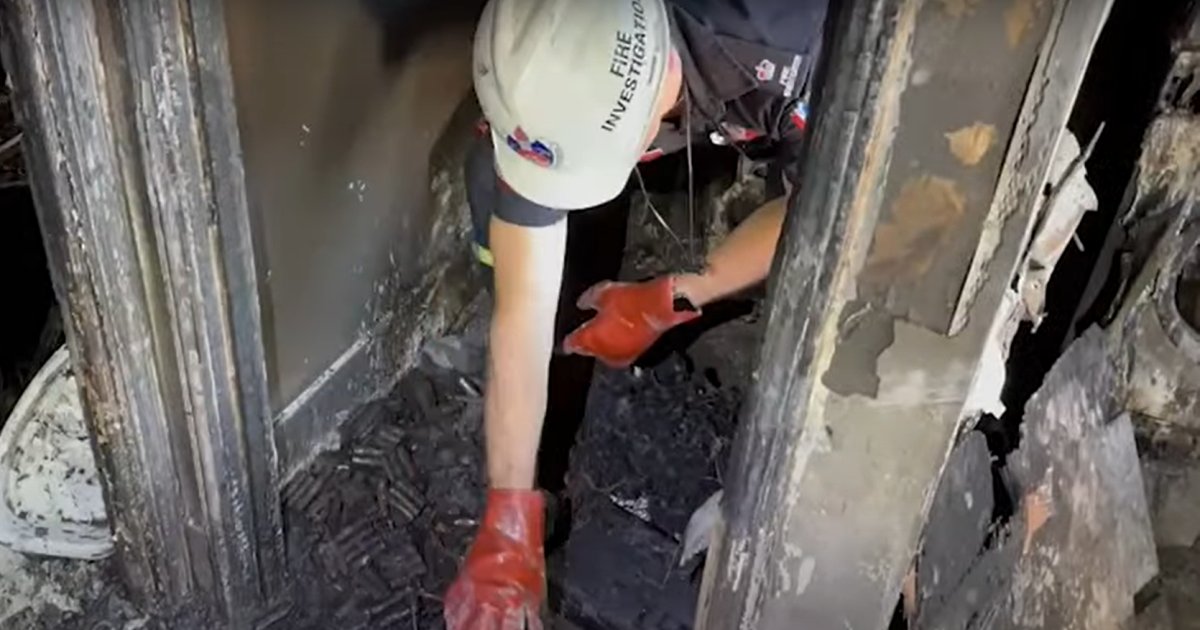
This solar and battery installation was the stuff of sparkie nightmares, and occupants of the Sydney home were very lucky to avoid an even greater tragedy.
Good quality solar batteries are expensive and part of the reason for this relates to safety. But some have been lured into self-installing their own home batteries and other solar gear using components of dubious provenance to save money. Beyond potentially breaching various electrical safety rules and regulations, this is a recipe for disaster.
Last Wednesday, fire destroyed a home in Kent Street, Epping NSW. The culprit was determined to be a battery pack made up of second-hand lithium-ion cells. The nature of the cells aside, the entire installation looked to be *really* dodgy.
A video from Fire and Rescue NSW (FRNSW) shows the occupant had a bunch of solar panels lined up along and beside a fence.
These were wired *through* the home’s back door into the laundry area. In the laundry area, the wiring went into a toilet cubicle. The wires were then connected into the lithium-ion battery pack. An investigation has shown this is where the fire started.
“These lithium-ion batteries, you can see there are lots of them, have failed and blown and exploded; causing the fire,” said FRNSW Fire Investigation and Research Unit Team Leader Michael Forbes. “And as you can see, as a consequence of this fire, it has destroyed this house.”
You can get a better sense of the installation and damage in the following video:
Thankfully there were no injuries.
“Had this inferno ignited in the middle of the night we could be talking about fatalities today,” said FRNSW Superintendent Adam Dewberry. “Our advice to the community is always consider where you purchase your lithium ion batteries and associated equipment. It is not a good idea to purchase them second-hand, especially when you don’t know the history of the products.”
Solar Battery Safety
One of the great things about lithium-ion battery tech is a lot of energy can be stored in a small space. One of the biggest risks with it is the same.
Lithium-ion batteries can experience ‘thermal runaway’ if they are damaged or if they overheat. This is a phenomenon whereby an increase in cell temperature fuels a further boost in temperature, which can very rapidly lead to a battery venting with flame or even exploding. And in this scenario, the fire can be difficult to extinguish.
Solar and battery storage done right is very safe. But it looks as though nothing in this installation was done well. In his guide to buying solar batteries, SolarQuotes founder Finn Peacock says:
“Don’t gamble with your safety to save money on a solar battery storage system. If you can’t afford a decent brand, don’t buy one at all.”
.. and that applies to solar panels, and installation as well – a bad installer can take good brands and make a dog’s breakfast of the installation. Investing in good hardware and professional, accredited installation can avoid major headaches and potentially heartache down the track.


 RSS - Posts
RSS - Posts



Using used NMC cells is just asking for trouble. Just don’t do it.
Meanwhile LiFePO4 chemistry, the battery cell of choice for such applications, just doesn’t do this. It’s chemistry means it just isn’t capable of thermal runaway. Failures can be messy and a bit noxious but they are orders of magnitude safer when it comes to fire hazard risk.
Correct Alex but MSM do not even know enough about battery chemistry to even try and comment so they lump all Lithium battery chemistry into to one vomment
I wonder if insurance will cover this one?
I doubt it. The damage that was caused seems largely due to the owners own actions
But at this point, we don’t know for sure just who the actual owner is. or whether the property was even insured in the first place.
Possibly. All you need to do is find an insurance company which will cover you against fire after you’ve painted your house with napalm jelly.
How much REAL evidence do some people need?
Lithium batteries as usual all just lumped in under the same name.
“Lithium batteries”.
I would never ever consider the use of these- it’s absolutely madness. I wouldn’t have trusted that awful mess even in the middle of a bare paddock!
Properly sourced LFP batteries with an appropriate Battery management system (BMS) and other protections is about as much different as it’s possible to get, completely cheese and chalk.
Brian G
I’m about to have a SolarEdge battery installed and was hoping to locate it on the one fully shaded wall on my weatherboard home. The plan is to installed a fireproof barrier on the weatherboard and then mount the battery on to that. One thing that has been questioned is the fact that the location is in a narrow gap where the weatherboard wall is 45cm from the metal boundary fence. Intallation access will be ok because my neighbour will allow the fence to be temporarily removed. Is there a requirement for a minimum clearance from the front of the battery to the fence? Unfortunately I don’t have access to the AS document, so hoping you can help.
Thanks for your help, in advance,
Hi Brian,
I don’t think SolarEdge have a specific clearance for the battery.
Where the Australian Standards are specific is around emergency egress.
Sunday night I’m on a mobile device so I don’t have the standard or a link to hand sorry, but search our blogs for “better think about where” and you’ll find some info.
Cheers
Wow Anthony! I didn’t expect an answer on a Sunday. Thanks so much!
I’ve searched on line and can’t find any reference specifically to the clearance required in front of the battery. I’ll search the blogs and see what I can find.